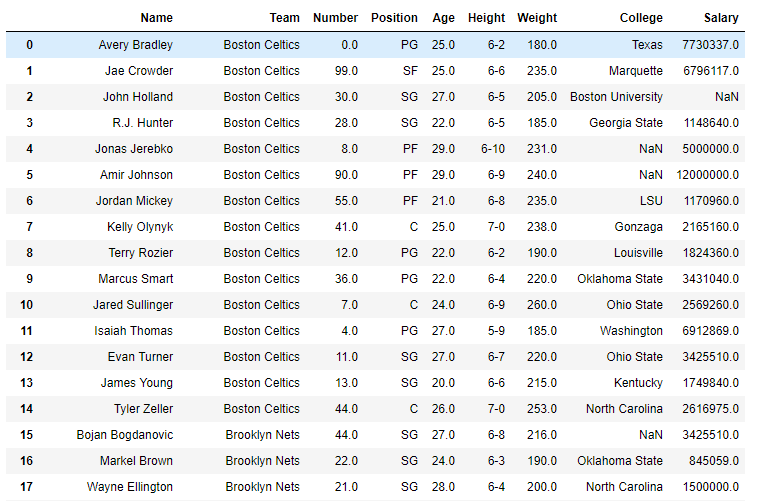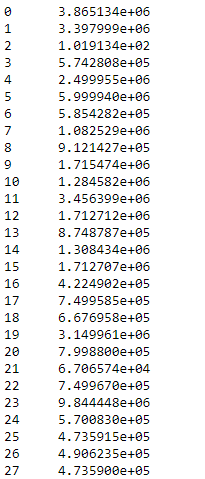Python | Панды dataframe.std ()
Python - отличный язык для анализа данных, в первую очередь из-за фантастической экосистемы пакетов Python, ориентированных на данные. Pandas - один из таких пакетов, который значительно упрощает импорт и анализ данных.
Pandas dataframe.std() function return sample standard deviation over requested axis. By default the standard deviations are normalized by N-1. It is a measure that is used to quantify the amount of variation or dispersion of a set of data values. For more information click here
Syntax : DataFrame.std(axis=None, skipna=None, level=None, ddof=1, numeric_only=None, **kwargs)
Parameters :
axis : {index (0), columns (1)}
skipna : Exclude NA/null values. If an entire row/column is NA, the result will be NA
level : If the axis is a MultiIndex (hierarchical), count along a particular level, collapsing into a Series
ddof : Delta Degrees of Freedom. The divisor used in calculations is N – ddof, where N represents the number of elements.
numeric_only : Include only float, int, boolean columns. If None, will attempt to use everything, then use only numeric data. Not implemented for Series.Return : std : Series or DataFrame (if level specified)
Для ссылки на CSV-файл, используемый в коде, щелкните здесь
Example #1: Use std() function to find the standard deviation of data along the index axis.
# importing pandas as pdimport pandas as pd # Creating the dataframe df = pd.read_csv("nba.csv") # Print the dataframedf |

Now find the standard deviation of all the numeric columns in the dataframe. We are going to skip the NaN values in the calculation of the standard deviation.
# finding STDdf.std(axis = 0, skipna = True) |
Выход :
Example #2: Use std() function to find the standard deviation over the column axis.
Find the standard deviation along the column axis. We are going to set skipna to be true. If we do not skip the NaN values then it will result in NaN values.
# importing pandas as pdimport pandas as pd # Creating the dataframe df = pd.read_csv("nba.csv") # STD over the column axis.df.std(axis = 1, skipna = True) |
Выход :
Внимание компьютерщик! Укрепите свои основы с помощью базового курса программирования Python и изучите основы.
Для начала подготовьтесь к собеседованию. Расширьте свои концепции структур данных с помощью курса Python DS. А чтобы начать свое путешествие по машинному обучению, присоединяйтесь к курсу Машинное обучение - базовый уровень.